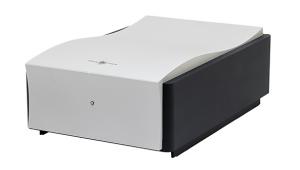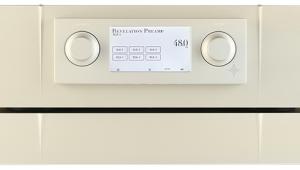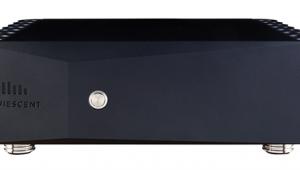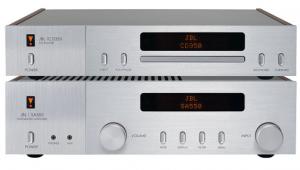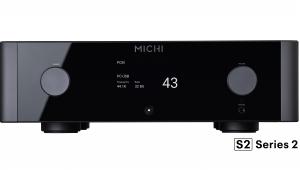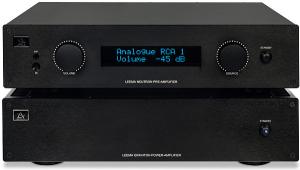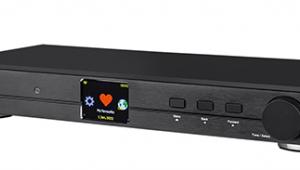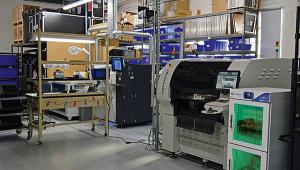Oppo Ha 1 (£1099)
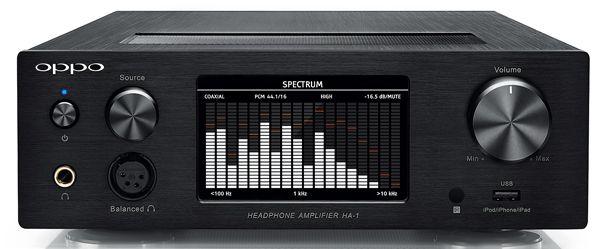
It was perhaps Benchmark that set a trend by equipping its compact, high-value DACs with a capable headphone amplifier. They became, in effect, an amalgam of DAC, headphone amplifier and simple preamp, and the HA-1 is from the same mould.
Much of its electronics derives from Oppo’s BDP-95EU and BDP-105 universal disc players [HFN May ’12 and Jan ’13]. The HA-1 uses the same ESS 9018 Sabre DAC and the same output circuitry but the headphone amp and preamplifier stages are new. The former has a Class A output stage conservatively specified as delivering up to 0.5W into low-impedance headphones or 0.2W into high impedance models (via phono input to ¼in jack out), rising to 2W and 0.8W respectively for headphones equipped for balanced drive. Output impedance is low, so the frequency response designed into a headphone is just what you’ll get via the HA-1 – even if its impedance varies widely.
Conventional headphone amps might once have only offered analogue inputs but modern units like the HA-1 also provide digital options. So, alongside its unbalanced analogue input on RCAs and balanced input on XLRs, the HA-1 also provides for S/PDIF digital inputs via coaxial and optical Toslink, an AES/EBU digital input via XLR, and an asynchronous USB input via the usual B-type socket.
The unbalanced, balanced and Toslink digital inputs all support up to 192kHz/24-bit resolution while the USB input stretches out to 384kHz/32-bit. It also provides for DSD replay using the DoP interface at rates up to DSD128, and even supports DSD256 in ‘native’ mode.
The rear panel is completed by a pair of phono and XLR output sockets, trigger in and out sockets, and the usual IEC mains socket. Round the front a further USB input is provided for the connection of an iPod, iPhone or iPad, and the HA-1 also incorporates a Bluetooth wireless input via a little attachable stub aerial.
Front-panel controls provide power on/off and source selection to the left above the ¼in jack socket and XLR headphone output sockets, with a large volume control knob to the right.
Clear and explicit
So how does it sound? Via the back-panel USB input and listening over Sony’s fine MDR-MA900 headphones [HFN Oct ’12], we achieved very good results. The sound was smooth and neutral, but with a reserved quality that bade well for extended listening even if it didn’t quite mine all the detail and vivacity to be had from a good recording.
But the HA-1’s headphone amplifier stage does have a clean, clear, explicit sound quality that provides insight and enjoyment on a wide range of music. We tried, for instance, the title track from Arne Domnérus’s Antiphone Blues [Proprius] – a typical ‘audiophile’ recording where you listen more for the sound quality than the music.
The HA-1 lapped it all up, with a forthright saxophone sound but well developed sense of the church acoustic and its long reverberation time. It was a similar story with an 88.2kHz/24-bit download of Daft Punk’s ‘Giorgio By Moroder’ from Random Access Memories. The HA-1 majored on explicitness but still did a fine job of conveying the infectious dance pulse that develops in the background.
Next we used the HA-1 as a DAC, first via its USB input to its preamp output (volume control disabled), using a Teac HA-501 as the headphone amp [see page 79]. We found the HA-1 to sound a little diffuse in this guise – the Daft Punk track, for instance, lost some of its urgency heard previously. Via S/PDIF the situation is complicated by the high jitter at lower sampling rates [see Lab Report HFN Sep ’14]. We did our USB-S/PDIF comparisons using 88.2kHz files to sidestep this issue. And the result was, indeed, a preference for the S/PDIF input, which restored some missing colour.
Verdict
The HA-1 is a well thought out and thoroughly engineered product at a competitive price. Its headphone amplifier stage is up there with the finest, and on high sampling rate material delivered via S/PDIF you hear it at its considerable best.
Originally published in the 2014 Yearbook



